Last Updated on August 3, 2021
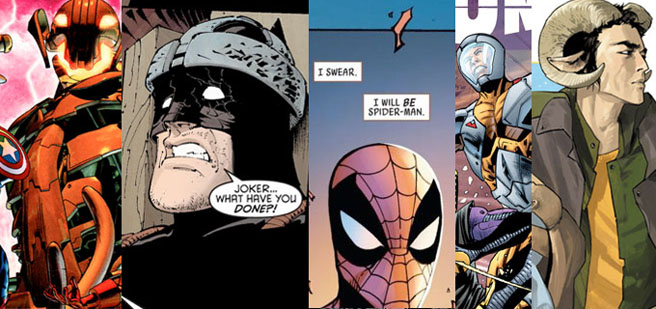
Also, please note that there are heavy SPOILERS herein. Be warned.
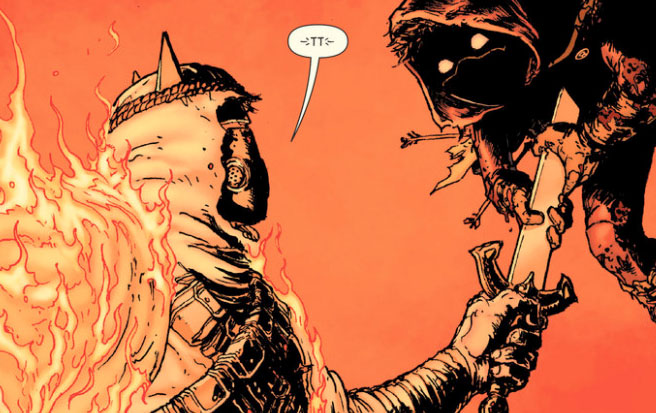
1. The Death of Damian Wayne
The test tube offspring of Talia Al Ghul and Bruce Wayne, Damian Wayne entered the Batman universe in Batman #655 during the “Batman & Son” arc, where his petulant, murderous, and determined will opened the doors for a very different Robin than we’d ever seen before. Writer Grant Morrison later revealed that it was always his intent to kill Damian off, his death serving as a metaphor for the fallout of divorce (only Damian’s parents were a superhero and a criminal mastermind). Damian wasn’t immediately embraced, but became a character that grew with readers over time, his attitude and tenacity becoming a hallmark to his character. He was the perfect blend of the previous three Robins; the do-gooder Dick Grayson, the impulsive Jason Todd, and the smart-minded Tim Drake.
Damian worked for a time with Grayson, who had donned the cowl when Bruce Wayne was killed (and later brought back) during the DC Crossover Final Crisis, and gradually made the “dynamic duo” dynamic again, before finally being able to fight alongside his true father, Bruce Wayne, upon his return. Damian’s demise came in the final issues of Batman, Incorporated at the hands of a fully grown clone of himself, called The Heretic, who served as Talia Al Ghul’s henchman, in a brutal, vicious fight that left the Boy Wonder bloody, broken, impaled, and full of arrows. Although created by Morrison, nobody fleshed out Damian’s character better than writer Peter J. Tomasi and artist Patrick Gleason on Batman and Robin, where a true legacy to the character was made and will definitely stand the test of time.
READ IT: Batman Incorporated Vol. 2: Gotham’s Most Wanted (The New 52)
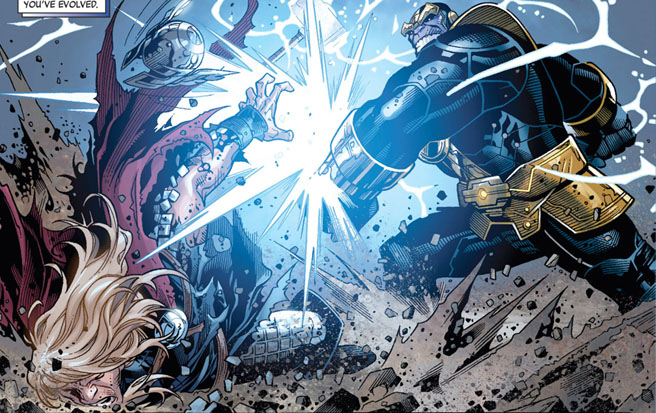
2. Marvel’s Infinity
The most compelling and thrilling of Marvel’s crossover events in 2013 came in the form of Infinity, a six-issue crossover event that had The Avengers journey to outer space, uniting with allies and enemies to fight off a new alien threat known as The Builders. However, while The Avengers fought for the universe, Thanos, the mad titan, made his way to Earth with the intent of conquering the planet and killing his only remaining offspring, a son named Thane. Written by Jonathan Hickman, the elaborate, intricate (and oftentimes confusing) story had all the elements of a big-budget superhero space epic, complete with otherworldly creatures, space battles, grand enemy schemes, and badass showdowns.
Beautifully rendered by artists Jerome Opena, Jim Cheung, and Dustin Weaver, the six-issue arc (as well as the tie in titles) serves as a reminder of the old-school events like Infinity Guantlet and teases the potential of the types of stories that could be translated to film on down the road. With GUARDIANS OF THE GALAXY coming next summer, many of the characters and themes of this mini-series event will become all too familiar to the masses and fortunately when new readers venture into the comic shop they’ll have stories like this to fill in the blanks on the source material.
READ IT: Infinity

3. Superior Spider-Man (The Death of Peter Parker)
Get ready for a whopper. For years, Doctor Octopus (aka Doctor Otto Octavius) has been dying a slow death, his body eventually confined to a hospital bed. But, being the devious and masterful villain he is, Doc Ock found a way to live on…inside Peter Parker! During the Dying Wish storyline, Doc Ock used an invention called an Octobot to swap his mind with Peter Parker’s, leaving Parker trapped in Doc Ock’s dying body. In the struggle to regain his body back, Parker was mortally wounded and died, but not before his own memories were merged with Doc Ock’s, now in control of Parker’s body completely. Reluctantly, Octavius embraced Parker’s memories and vowed to continue his legacy as Spider-Man and also to become a better man in the process.
And so, Superior Spider-Man was born. Fans lashed out at writer Dan Slott for this massive curveball, even sending him death threats, but as time wore on with Octavius as Spidey, fans began to warm up to the villain-turned-hero, which has made for some interesting character dynamics with many of Spidey’s fellow foe’s and allies. So far, Superior Spider-Man has had a good run and although we expect that Peter Parker will return at some point (it’s comics after all), the villain-as-hero concept has worked surprisingly well and made for some of the most interesting Spider-Man stories in a long time.

4. Batman: Death of the Family
One of the best mainstream comics on the stands today is the regular Batman book written by Scott Snyder (American Vampire) and drawn by Greg Capullo (Spawn). Snyder came aboard the title when DC’s New 52 kicked off and has been with it ever since, ushering in some outstanding, deeply-rooted stories that give Batman a new sense of history and depth with Capullo’s art adding the scope, detail, and energy. The most controversial story to come from the team yet was Death of the Family, which featured a dangerous and bloody confrontation with The Joker, who escaped from Arkham Asylum (leaving behind his surgically removed face) with the vow of destroying all those that fall under the Bat-family (Robin, Nightwing, Batgirl, Batwoman, Red Hood, etc.).
As the first main Joker vs. Batman story of the New 52, Death of the Family had an especially macabre spirit, which meshed well with the dark themes of Batman’s history. Part cat-and-mouse, part revenge, and part Silence of the Lambs, the Joker (with a Leatherface-as-clown appearance) is built into an especially sadistic and ruthless madman who lives only to battle what he considers to be his only worth opponent; Batman. The suspense is brought to a boil after Joker captures the entire Bat family and sits them down for dinner with The Dark Knight, where their covered faces tease the possibility of the Joker exacting some rather extreme mutilation. The finale may not live up to the risky possibilities, but the lead up to it is some damn fine storytelling and a fine intro of a New 52 Joker.
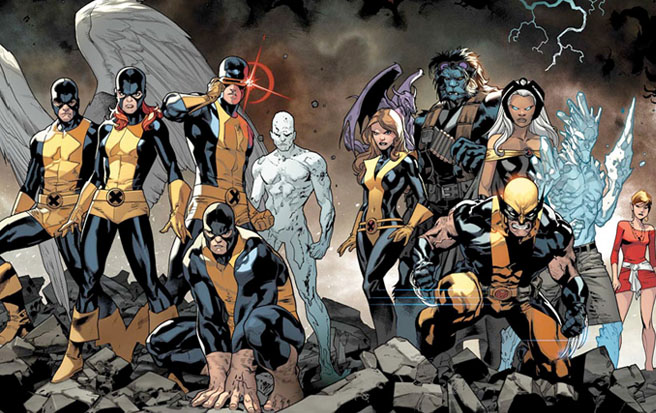
5. X-Men: Battle of the Atom
Having read the X-Men books for more than twenty years it’s still near impossible to keep up with all the events that have transpired in that time span. I won’t attempt to summarize them here, as all you really need to know is that after being brainwashed with the Dark Phoenix power, Cyclops murdered Professor X, leaving the X-Men divided into two separate teams. Wolverine runs the Jean Grey School (formerly Xavier’s) with one band of mutants, while a fugitive Cyclops runs his own militant-style school with another band of mutants. Although each side is fighting for the betterment of mutantkind, their methods are sharply divisive. Then, Dr. Hank McCoy (aka Beast) does the unthinkable: He travels back in time to bring the original X-Men (Cyclops, Beast, Jean Grey, Iceman, and Angel) to the present in order to stop the present day Cyclops from committing genocide, creating an All-New X-Men team.
Falling perfectly in line with the time travel stories that have populated the books for years (and soon the movies with DAYS OF FUTURE PAST), the Battle of the Atom kicks off when X-Men from the future travel to present day in order to force the X-Men of the past back to their rightful time. The mission fails, however, leaving the original X-Men stuck in present day, where they now must face being X-Men in an evolved world with their surviving “doubles” still amongst them. For those that dig the “Back to the Future” type storylines this is a must read and offers the most interesting path for the X-Men in a long time, brought to you by Brian Michael Bendis and artist Stuart Immonen.
READ IT: X-Men: Battle of the Atom
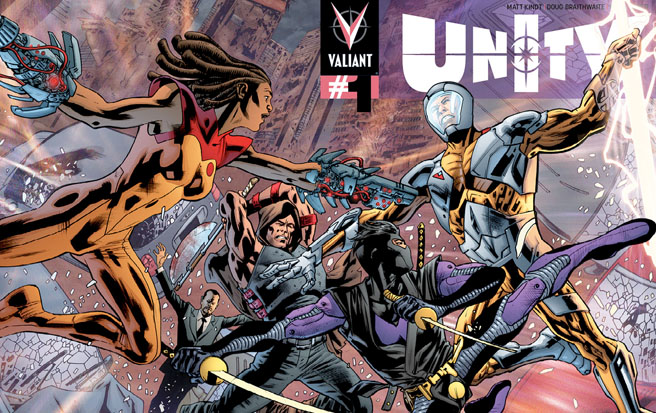
6. Valiant kicks off a new era
Valiant Comics was originally founded by Jim Shooter and Bob Layton and in the early ’90’s offered up a new (and old) set of superhero characters that served as a surprisingly awesome alternative to the Marvel and DC-led parade of familiar characters. Unfortunately, the company was sold to Acclaim in 1994 who shut down the publishing arm 10 years later, ending an era of top notch characters and creations that were essentially left in limbo.
Thankfully, Valiant was rescued by Dinesh Shamdeshani and Jason Kothari, who have brought back not only the characters, but the spirit of the original Valiant comics, opening the doors for a new superhero universe beyond the familiar ones of Marvel and DC. Featuring favorites like X-O Manowar, Bloodshot, Archer & Armstrong, Eternal Warrior, Harbinger, Shadowman, Quantum & Woody, and more on the way, the new Valiant, which kicked off in 2012 has continued to rise in notoriety, quality, and quantity, including their first crossover event, Unity, which pays homage to the first Unity crossover in 1992, while establishing a new story and direction for the title. With top notch creators putting out awesome work month-to-month, Valiant has cemented their place in the market as an outstanding alternative to mainstream superhero books.
READ IT: X-O Manowar: Volume 1
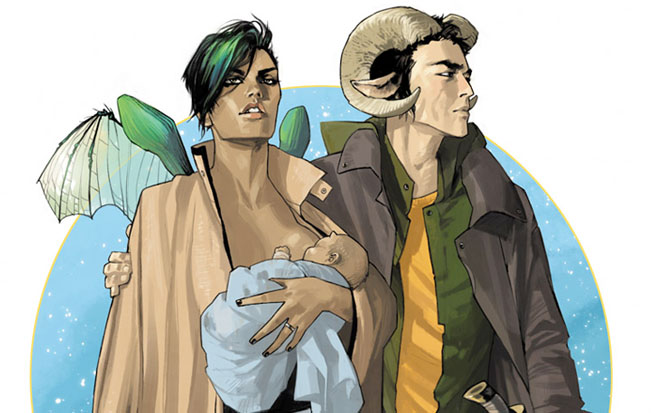
7. The brilliance of Saga
Okay, this is where we get into some indie territory, particularly with Image Comics, which also publishes greats like The Walking Dead, East of West, Prophet, Morning Glories, and many more. However, Saga is THE book to beat for the independent publisher these days. Written by Y: The Last Man’s Brian K. Vaughn and beautifully illustrated by Fiona Staples, the sci-fi/fantasy series is both stunningly creative and bitingly hilarious, deep, and rich with character. The story centers on Alana and Marko, two lovers from long-warring extraterrestrial races who flee from their home worlds during an intergalactic war in order to care for their newborn daughter, Hazel, who narrates the adventure as an adult (although we have only seen her as a baby so far).
The series has Vaughn’s usual style that gets to the heart of relevant everyday issues that we all face, while embodying them in a fantastical story. It’s this connection, the human connection, that makes this otherworldly tale so engaging. The oddities are there for sure, but even as strange as things may be they’re instantly familiar to our own world in a sense, as Vaughn seeps the story in metaphor, reflecting our own lives during our own time inside the bubble of another universe. Creatures, robots, nudity, violence, ghosts, profanity, relationships, and space travel are just a few things you’ll encounter in Saga and it’s a tale you don’t want to miss. We’re hooked to the end.
READ IT: Saga: Volume 1
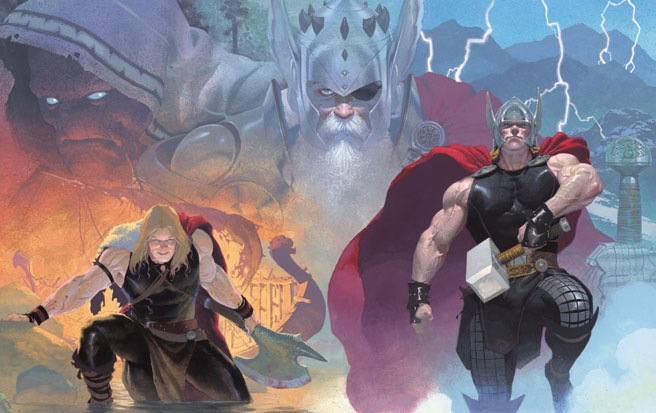
8. Thor fights a (God) Butcher
Thor hasn’t really been all that exciting since the old days of Walt Simonson, but his resurgence of late, including the “rebirth” by J. Michael Straczynski and artist Olivier Coipel, has opened up the God of Thunder to some really stellar storytelling, most notably his Marvel NOW relaunch by writer Jason Aaron (Scalped) and artist Esad Ribic which kicked off with The God Butcher and led into God Bomb. Featuring three versions of Thor, the past, present, and future, battling a creature named Gorr, who is killing off god’s all over the universe, leaving a trail of bodies for the Asgardian warrior to follow and taking him on a high-stakes journey of self discovery and destiny.
Rich with creativity and character, we’ve come to expect nothing less from writer Jason Aaron, who weaves an intricately layered tale that leaves nothing black and white, making the good guys and bad guys much more than boasting heroes and villains, instead taking us deep into the world of “the gods” while telling a story of intensity and suspense that left us burning for more month-to-month. Aaron has crafted a new direction for the God of Thunder that is wonderfully imaginative and capitalizes on the full potential of the Nine Realms, making Thor much more than a brute with a magic hammer and a serious contender in the stable of leading Marvel heroes. (Runner up goes to Matt Fraction’s solo Hawkeye series, also well worth a look)
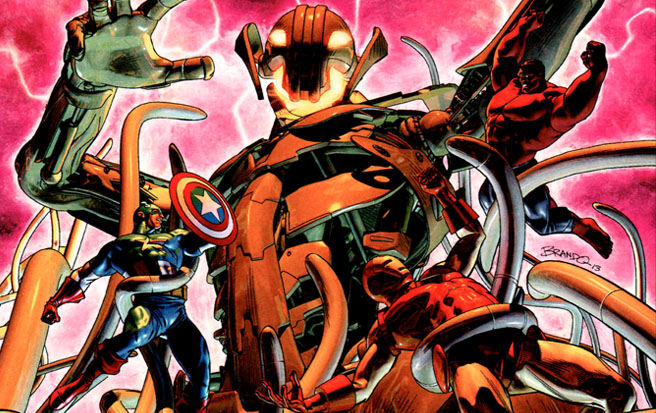
9. Marvel’s Age of Ultron
Featuring a massive post apocalyptic time travel storyline that feels more X-Men: Days of Future Past than Avengers proper, Age of Ultron was a 10-issue event that pits the current stable of Marvel heroes against a reawakened Ultron, the villainous robotic creation of Hank Pym aka Ant-Man. The story finds the heroes of The Avengers and some members of the X-Men dealing with a wasteland of the future that is patrolled by Ultron’s sentinels where they discover that their only hope of defeating the maniacal robot is to jump through space and time, leading to a destructive finale that shapes the future of the Marvel Universe.
Brilliantly drawn by epic artist Bryan Hitch and Brandon Peterson, Brian Michael Bendis’ story has plenty to offer in terms of action, suspense, and surprises, focusing heavily on Wolverine, Invisible Woman, and Hank Pym, but falls short of delivering the satisfaction of Hickman’s Infinity. Still, if time travel conundrums and “butterfly effect” consequences tickle your fancy, this is a fine jaunt down that road. For those looking to prepare for 2015’s THE AVENGERS: AGE OF ULTRON, however, this is not the place to start, as Joss Whedon’s sequel is Age of Ultron in name only, especially with Fox owning two of the main characters of the story. As a comic, though, it’s a fine crossover event.
READ IT: Age Of Ultron (Avengers)
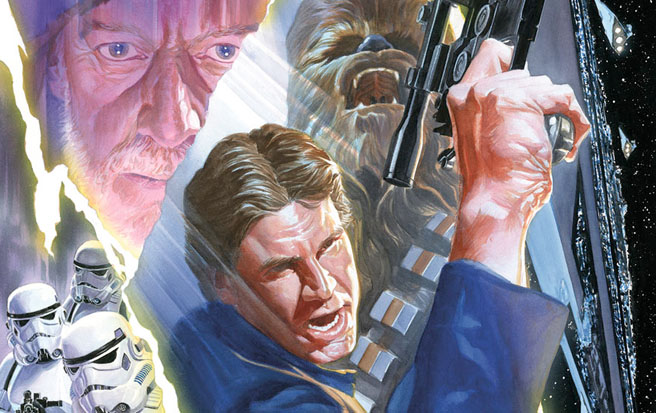
10. Star Wars goes back to basics
For Star Wars fans it can be daunting to find a spinoff book that appeals to knowledge of the films they’re spawned from. There is such a wide array of various timelines, characters, and alternate storylines from George Lucas’ much-beloved universe that it can stall the casual reader from even venturing into that territory. Well, the answer to that mess is Dark Horse Comics’ Star Wars, written by Brian Wood (DMZ, Northlanders) and drawn by Carlos D’Anda, which is the perfect jumping on point for new readers who want to slide easily into the familiar universe, without having to know every nook and cranny of the expanded one.
Kicking off after the destruction of the Death Star in Episode IV, the series focuses on the traditional heroes of Star Wars lore, including Darth Vader, Luke Skywalker, Princess Leia, Han Solo, and many of your favorite supporting characters. Filling in the gaps of the events post A NEW HOPE, there’s a lot of fun to be had here and it feels like more of a continuation of the story, rather than a break from the norm, which is traditionally the case. This is a great place to settle into some new stories about classic characters that follows the lineage of the familiar universe. It’s rare that a book can be both new and familiar at the same time and work as well as this.


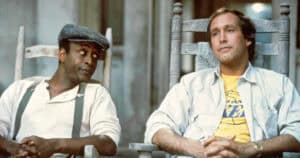
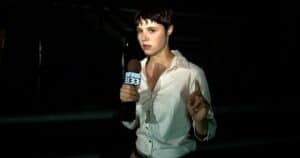
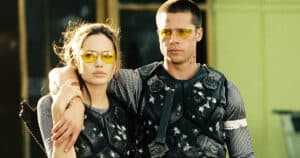
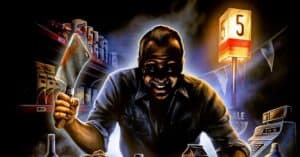
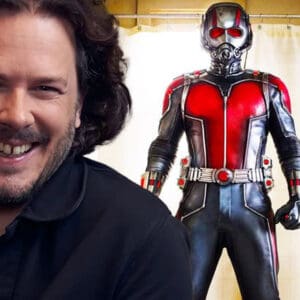
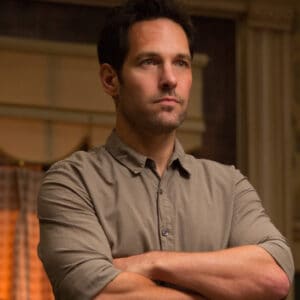
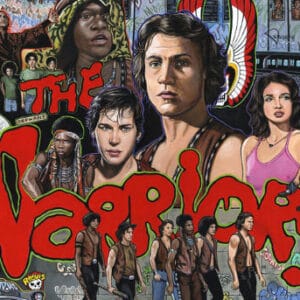
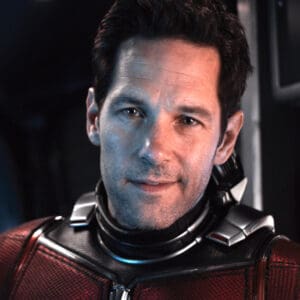
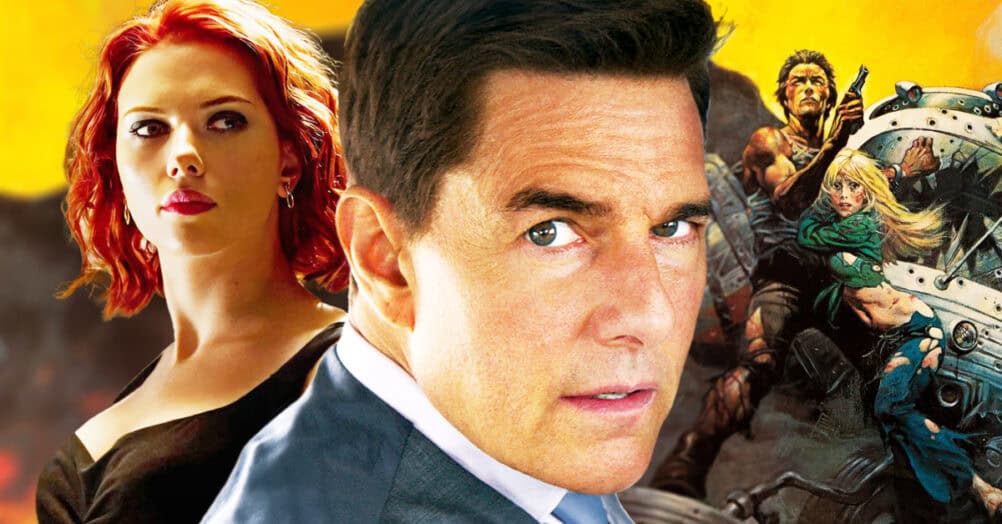
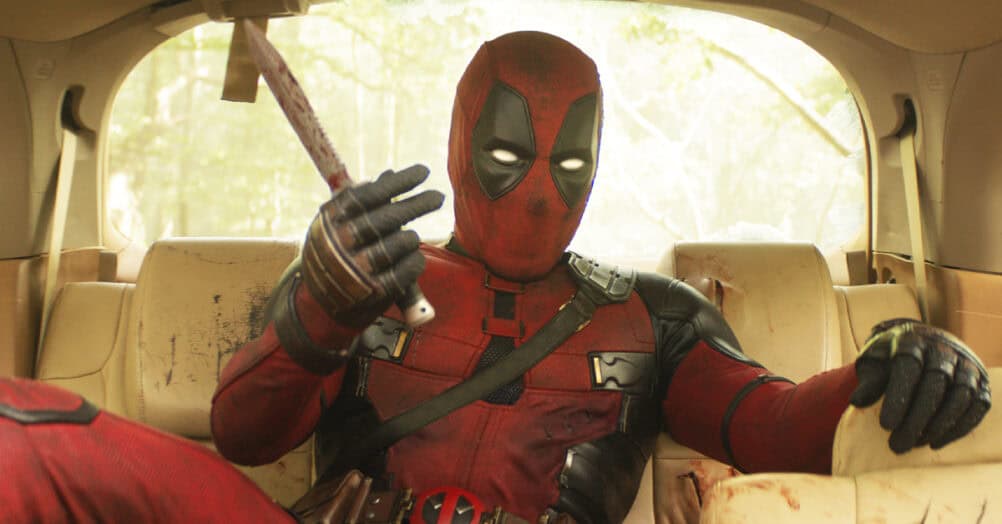

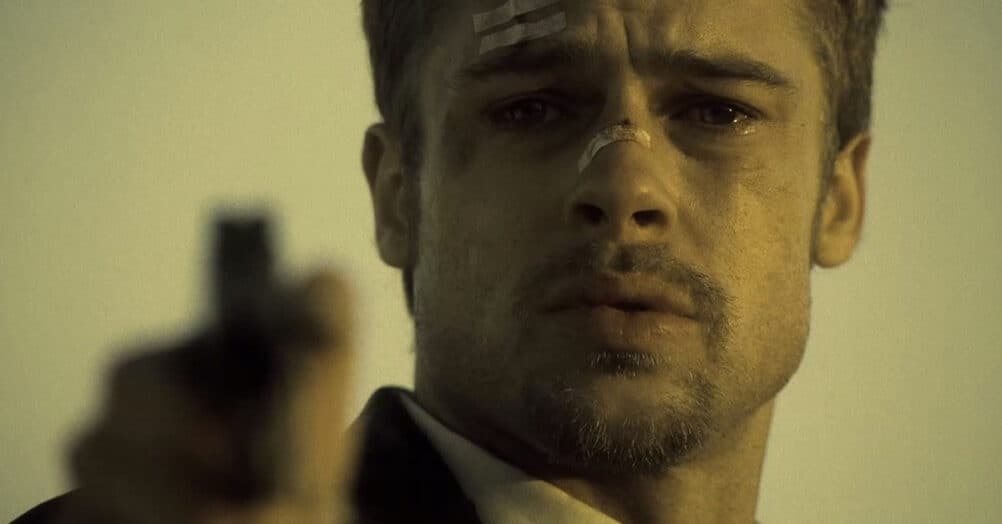
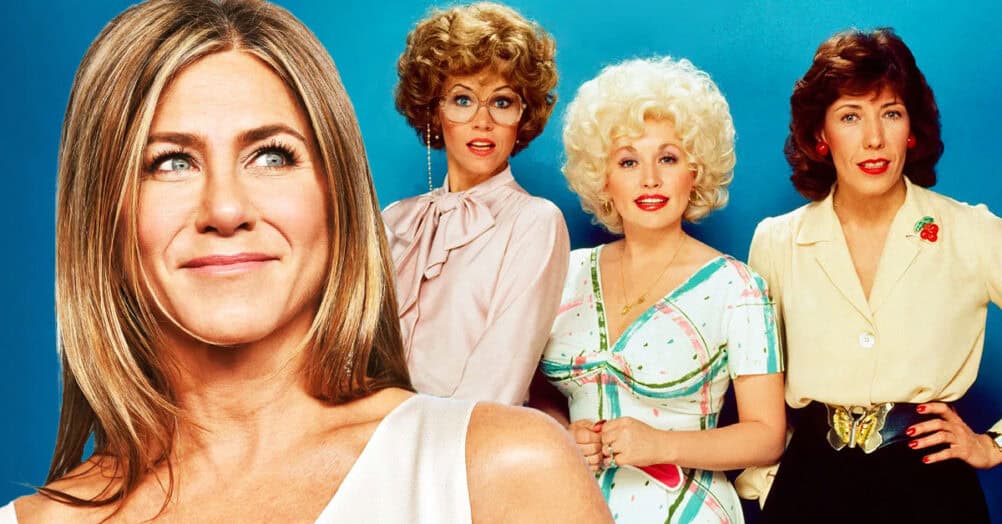
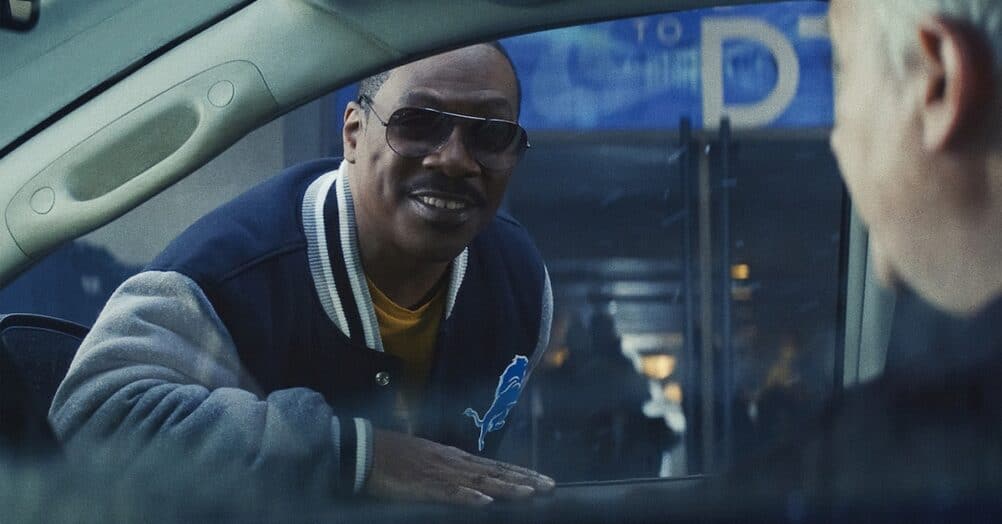

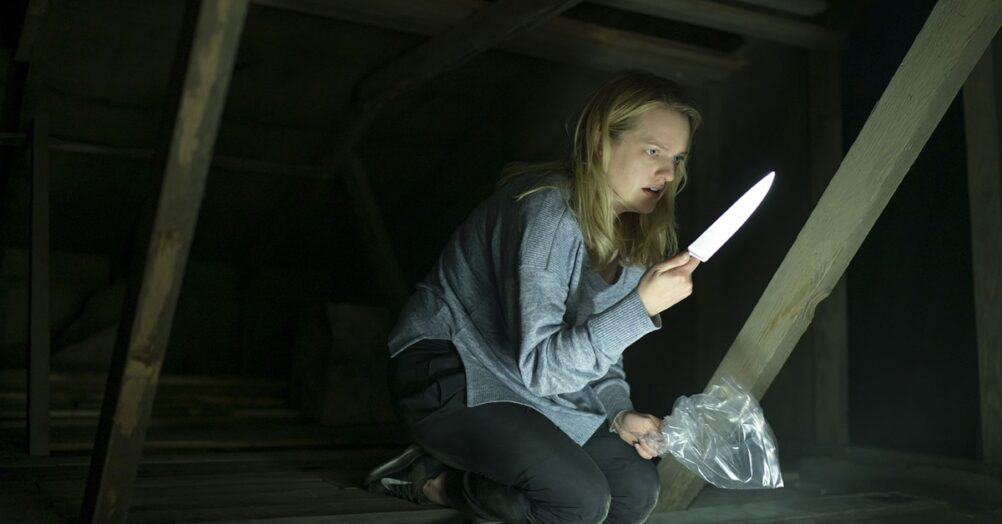
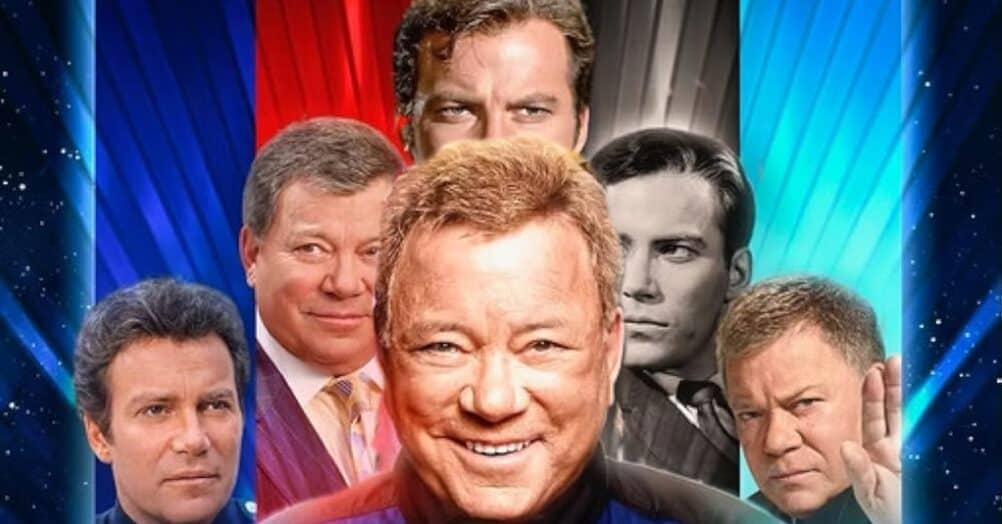

Follow the JOBLO MOVIE NETWORK
Follow us on YOUTUBE
Follow ARROW IN THE HEAD
Follow AITH on YOUTUBE